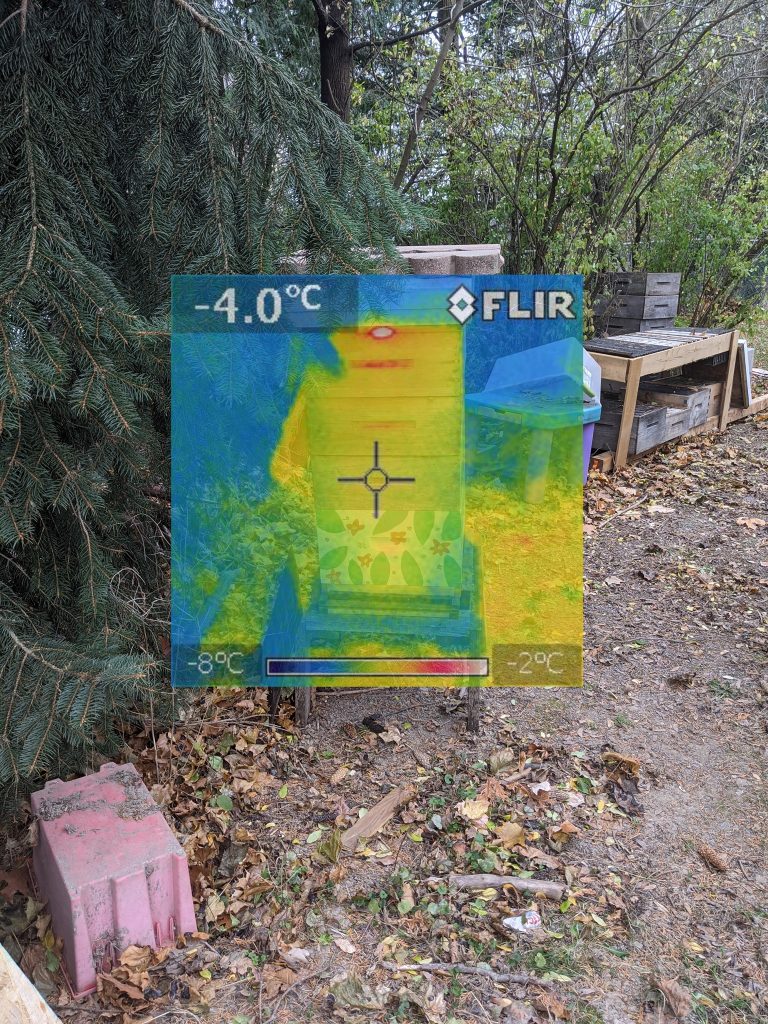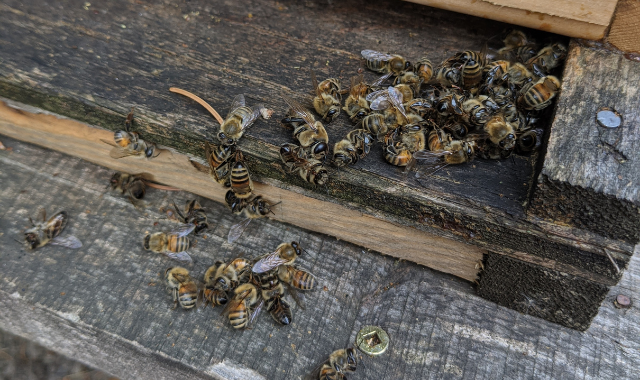Quite a few people have asked how the bees are doing with the cold weather. Hard to say. They’re definitely still in there. I took a picture with an infrared camera and you can see the air coming out of the top entrance of the hive is warmer than the boxes.

It’s not huge difference, but enough to know that there are definitely still bees in there. You can also see a temperature difference through the hand-holds in the top box, where the wood is thinner. That’s about all I can tell at this point. I’m hoping as it gets colder, I’ll be able to grab an image that shows where the cluster is holed up. Right now, I’d imagine there’s still a lot of bees in there though. Tomorrow and Friday it’s supposed to warm up above 10C (bee flying temperature), so it will be interesting to see how many come out. I think I might go out and grab some insulation to wrap around the hive. The boxes they’re in have walls quite a bit thinner than a typical hive in a tree. So, many people add insulation to help through the coldest parts of the winter.
The undertakers are still definitely working. I took the entrance reducer off (used to make the entrance at the bottom smaller, both to hold in heat better, but also to keep mice out), and with a small stick just swept the first few inches of the hive to see how many were dead. The undertaker bees had brought them all to the front right corner and were stacking them up. Typically that’s where they come in and out, so I think they were trying to bring them out, but got stuck, so they just brought them as far as they could. That might look like a lot of bees that are dead in the 2nd picture, but in the summer, a normal, healthy colony will lose about 1,000 bees a day and birth about 1,500. Most die while out foraging, so we never see piles of dead bees. The colony as a whole slows way down in the winter. A healthy colony of 50,000 bees will only have about 20,000 bees come spring. So, that’s about 200 bees dying per day. It just seems like a lot more, because they’re all dying in the colony now.
Most are just natural deaths. Nothing crazy going on. They just don’t build up population much in the winter, because there isn’t as much work to do. So, they let their numbers die down, then ramp back up for the spring when there’s more work to be done again collecting pollen, nectar, etc..

